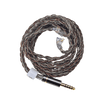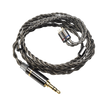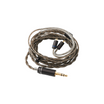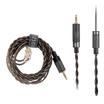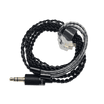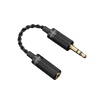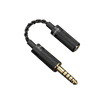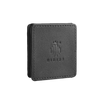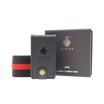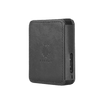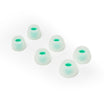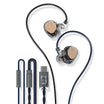May 06, 2023
Analyzing the tuning characteristics of Hidizs MS5
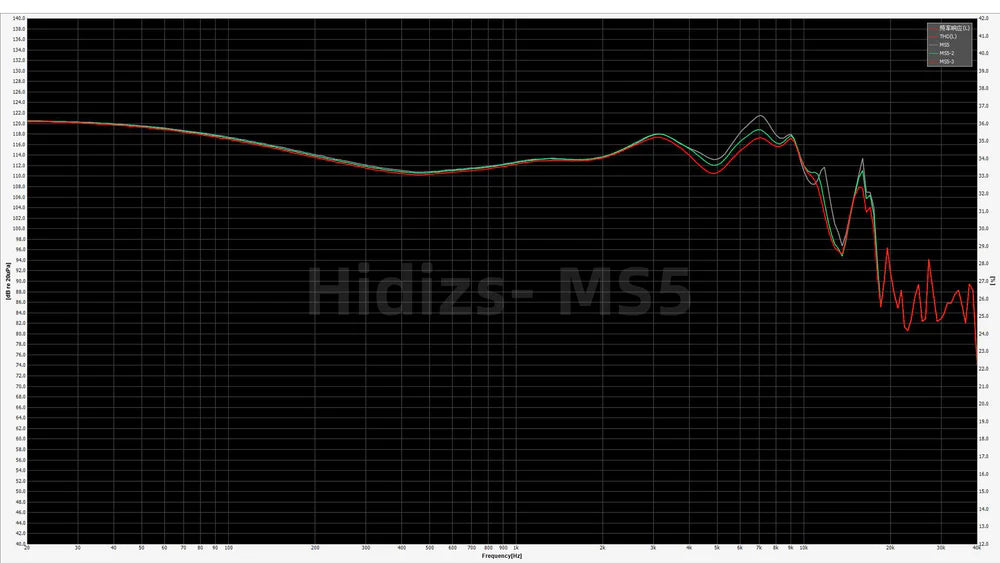
The Secret of the Descent of Hymns
——Analyzing the tuning characteristics of Hidizs MS5 Dark Angel from the frequency response curve
Hidizs MS5 Dark Angel 1DD 4BA 5 Drivers HiFi In-Ear Monitors has been released for a week. Many audiophiles who participated in the free global public review have already received the officially released products and listened to them. We have also received a lot of feedback. And there are some very professional questions in the feedback, especially about the frequency response curve of MS5, which has aroused extensive attention and discussion.
Before starting to discuss the topic of frequency response curves, it is necessary to make some complaints about the current IEMs market. Especially after 2021, the IEMs market is flooded with almost identical products. No matter the driver configuration, the listening experience is the same, which is very dull. The reason for this phenomenon is actually in the "frequency response curve". Some products completely ignore their own configuration and positioning, just focus on a certain "standard" frequency response curve to adjust the sound quality, trying to please everyone, so they inevitably fall into the quagmire of homogeneity.
The frequency response curve is composed of XY axes, the X axis is the sound frequency in Hz, and the Y axis is the responsivity in dB. This can be a very intuitive representation of the earphone driver's responsiveness at a certain frequency. The better the responsiveness, the higher the value, showing an upward curve. If the response ability is poor, the value will drop, showing a downward curve. This is the first kind of information that a frequency response curve can convey to us. This kind of information indicates how well an earphone driver is manufactured. If the frequency response curve is relatively smooth, it means that the earphone drivers have similar responses at different frequencies, and the audio played is more neutral and balanced. On the contrary, it means that the sound played by the earphones may not be average enough. This is related to the structure and material of the driver. Most of the high-fidelity earphones currently on the market can do this at the physical level, which is also the basic level of an IEMs.
From another perspective, the frequency response curve can not only indicate the quality of the product at the physical level, but also show the orientation of a headset in terms of sound adjustment. Any material has a limit, especially the diaphragm, which has an upper limit to the total amount of sound it can transmit through vibration. Within this upper range, if you increase the response to low frequencies, you must reduce the response to high frequencies or some mid frequencies, and vice versa. What we call "tuning" is actually "choosing" the response of the driver in different frequency bands. It's a zero-sum game, as one increases, the other necessarily decreases. Therefore, an IEMs mainly aimed at pop music usually increases the responsivity in the frequency part of the human voice, and appropriately reduces the responsivity of high and ultra-high frequencies, thus making young people indulge in the boring voice of SZA. This "adjustment" can determine the style of an IEMs and which type of music is more suitable.

MS5 Frequency Response Curve - Low Frequency Sound Filter
Of course, only adjusting the response capability of some frequency bands can only roughly obtain the overall output change. For some high-end IEMs, more precise adjustments are required, such as scalpel-like precise adjustments and processing on special frequency bands corresponding to certain musical instruments. Hidizs MS5 Dark Angel does an excellent job with this precision. If we zoom in on the frequency response curve of MS5, there is an obvious upward slope in the frequency band of 2kHz-3kHz. And in this frequency band, there are rich instrument response points, such as kick drum, snare drum, hi-hat, big cymbal, bass, electric guitar, acoustic guitar, electronic organ, piano, etc. The "texture" of these instruments is often in this frequency band. The impact of drums, the presence of cymbals, basses and electric pianos, and the sharpness and clarity of my favorite guitar are all expressed in the 2kHz-3kHz frequency band. In the 4kHz-5kHz frequency band, there are significantly fewer instruments that can respond. So this frequency band shows a downward attenuation curve, and the reduced part is made up in the 2kHz-3kHz frequency band (remember? Frequency response is a zero-sum game). In the 5kHz-9kHz frequency band, the response curve goes up again, because in this high frequency band, common instrument overtones and brightness are responded here, and the high-frequency overtones of brass instruments also come from here. With the enhancement of 5kHz-9kHz, the high-frequency extension of MS5 has an almost unmatched smoothness, which hits the soul directly and lasts for a long time. Finally, in the very high frequency part of 10-20kHz, MS5 still has a very good response. It has a very friendly response to the sense of space and extension of orchestral instruments, and the harmonic vibration of the instruments will form the resonance of the ensemble, bringing an excellent immersive listening experience.

Hidizs MS5 Dark Angel is also equipped with three kinds of sound tuning filters. The frequency response curves of these three sound tuning filters are different. The biggest difference is in the 2kHz-10kHz frequency band analyzed above, that is, the high frequency and ultra high frequency parts. These three sound tuning filters are suitable for use in different types of music. Low Frequency Sound Filter is more suitable for listening to popular songs (the high frequency is processed softer, and the human voice will be clearer). Standard Sound Filter can adapt to various types of music, the sense of hearing will be more neutral and balanced, and it is also handy in compiling music. And High Frequency Sound Filter (my favorite) is good at large-scale music, symphony, orchestral music and other music. The enhanced high frequency will give the sense of hearing a sense of enlightenment, and the sense of space and presence are unparalleled.

In today's world full of homogeneous things and stereotyped things, and big data is weaving information cocoons according to our preferences every day, trying to close us up. Why not find something that catches your eye and has a distinctive personality in your favorite music? MS5 Dark Angel, just like her name, advocates being unconventional, not following the trend, and giving others more freedom of choice, isn't it the truth you are looking for?


